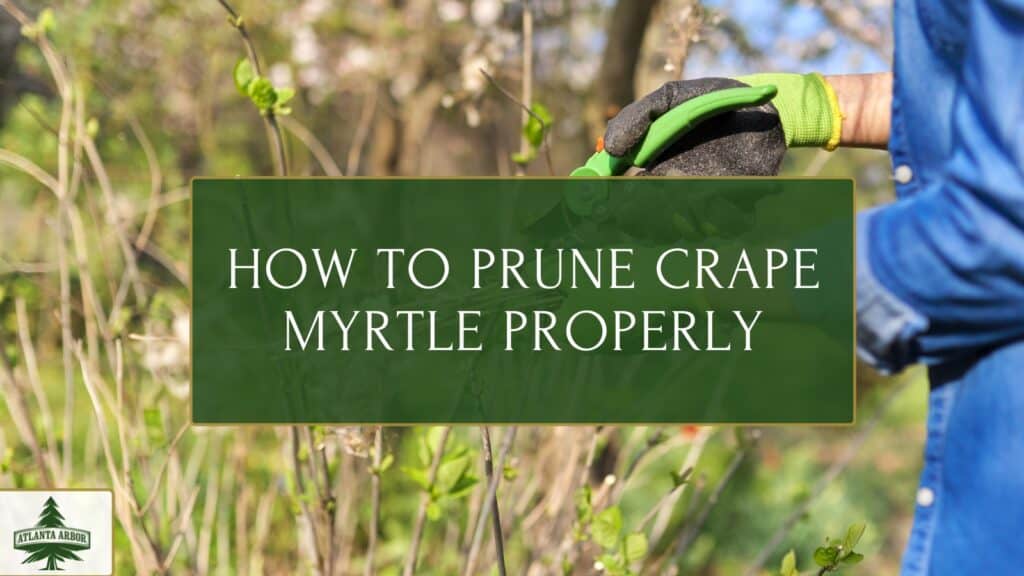Crape myrtle, scientifically known as Lagerstroemia, is a genus of flowering plants native to Asia, including China, Korea, and Japan. These ornamental shrubs or small trees are widely cultivated for their attractive clusters of colorful flowers, which bloom in summer and continue into fall.
Craple myrtle pruning is the trimming and shaping of crape myrtle trees to promote healthy growth, enhance their appearance, and encourage prolific flowering.
Crape myrtles are prized for their vibrant hues, ranging from shades of white, pink, and lavender to deep red and purple. They are popular landscape plants in many regions due to their heat tolerance, drought resistance, and relatively low maintenance requirements.
Crape myrtles are used as specimen plants, hedges, or border shrubs in gardens, parks, and urban landscapes, adding beauty and charm to outdoor spaces throughout the growing season.
By employing correct pruning techniques and timing, gardeners ensure that their crape myrtle trees remain vibrant, vigorous, and visually stunning.

What Is Craple Myrtle Pruning?
Crape myrtle pruning involves the deliberate clipping and hewing of crape myrtle trees to advance their health, improve their countenance, and encourage abundant flowering.
Crape myrtles are available in various sizes, from shrubby dwarf varieties to towering trees, offering colors ranging from white to deep red and purple. They are known for their showy summer flowers, colorful fall foliage, and attractive exfoliating bark in winter.
Crape myrtles thrive in full sun, requiring a minimum of 6 hours of sunlight per day. They are extremely heat-tolerant and prefer well-drained soil. While they are not picky about soil type, good drainage is essential for their health.
These plants bloom from July to September, with some varieties flowering until the first frost. Flower colors vary and include shades of red, purple, pink, and white.
Pruning crape myrtles is done in winter when they are dormant. The correct method involves reducing side branches for single-trunk trees and shaping multi-trunk trees. Shrubs require minimal pruning for a natural look. Over-pruning, known as ‘crape murder,’ is contraindicated as it leads to fragile growth and fewer blooms.
Crape myrtles are used in landscaping as screens, lawn specimens, shrub borders, and container plants. They thrive in warmer southern climates (USDA zones 7-9) and prefer full sun. Over 200 years of cultivation have resulted in numerous cultivars with variegated characteristics suitable for different landscaping needs.
How to Prune Crape Myrtle Properly
Pruning crape myrtle trees is both a science and an art. Done correctly, it enhances their health, aesthetics, and blooming potential. However, improper pruning causes weakened trees and fewer flowers. Remember to approach pruning with care, patience, and respect for the natural form of the tree, and you’ll be rewarded with a stunning landscape centerpiece that thrives year after year.
The following are ways to correctly pollard a crape myrtle:
1. Understand the Pruning Goals:
Pruning crape myrtles shape the tree, promotes airflow, extract dead or diseased branches, and stimulate new growth and flower production. Before you start pruning, identify your goals to guide your pruning decisions.
2. Choose the Right Time
The best time to prune crape myrtles is during late winter or early spring, while the trees are still dormant. Avoid pruning in late summer or fall, as it stimulates new growth that doesn’t harden off before winter, increasing susceptibility to frost damage.
3. Gather the Necessary Tools
Equip yourself with sharp, clean pruning tools, including hand pruners, loppers, and a pruning saw for larger branches. Clean tools minimize the risk of spreading diseases between plants.
4. Start with Dead and Diseased Branches
Begin by removing any dead, diseased, or damaged branches. These branches not only detract from the tree’s appearance but also harbor pests and diseases that spread to healthy parts of the tree.
5. Remove Suckers and Water Sprouts:
Crape myrtles produce suckers (new shoots emerging from the base of the tree) and water sprouts (rapid vertical growth from lateral branches). Extract these vigorously growing shoots to maintain the tree’s shape and encourage more productive growth.
6. Thin Out Branches
Thin out overcrowded branches to improve airflow and sunlight penetration throughout the canopy. Focus on removing inward-growing or crossing branches to open up the tree’s interior and reduce the risk of disease.
7. Maintain a Natural Form
When pruning, aim to preserve the crape myrtle’s natural growth habit and graceful silhouette. Avoid “topping” or severe pruning, as this creates unsightly stubs and encourages feeble, spindly growth.
8. Use Proper Pruning Techniques
Make clean cuts just above a bud or lateral branch junction, angling the cut slightly away from the bud to prevent water from pooling. Avoid leaving stubs or cutting too close to the trunk, as this damages the tree and slow healing.
9. Consider Crape Myrtle Variety
Different crape myrtle varieties have unique growth habits and pruning requirements. Research your specific variety to understand its growth pattern and flowering habits before pruning.
10. Monitor for Pests and Diseases
Keep an eye out for signs of pests or diseases during pruning. Typical issues include powdery mildew, aphids, scale insects, and crape myrtle bark scale. Address any problems promptly to prevent them from spreading.
What Are the Common Pruning Mistakes to Avoid in Craple Myrtle Pruning?
Over-pruning:
- Over-pruning, also known as “crape murder,” involves excessively cutting back branches, often resulting in an unnatural and unsightly appearance.
- Effects: Over-pruning infirms the tree, reduces flowering, and aggravates the growth of shaky, spindly shoots.
- Avoid drastic pruning measures such as topping or shearing the tree. Instead, opt for selective pruning to uphold the tree’s natural shape and structure.
Improper timing:
Pruning crape myrtles at the wrong time of year disrupts their flowering cycle and leaves them vulnerable to frost damage.
- Pruning during the late summer or fall removes flower buds for the following year’s bloom.
- Pruning in early spring, before new growth emerges, is recommended to diminish this risk.
- Familiarize yourself with the optimal pruning times for crape myrtles in your region and avoid pruning during periods of active growth or flowering.
Incorrect cuts:
- Making improper cuts, such as leaving stubs or cutting too close to the trunk, harms the tree and impedes its ability to heal.
- Improper cuts precipitate entry points for pests and diseases, leading to further damage or decay.
- Utilize sharp, clean pruning tools and make proper pruning cuts at a 45-degree angle just outside the branch collar, avoiding residual stubs or cutting flush with the trunk. This nurtures proper healing and reduces the risk of infection.
Are your crape myrtles overdue for a trim? Don’t wait until it’s too late! Take action now to ensure your trees thrive and flourish. Your garden thanks you for it! Reach out to a trusted tree care company today and watch your crape myrtles flourish!
Do I prune crape myrtles to a specific height?
While you prune crape myrtles to maintain a specific height, avoid severe pruning, as this enhances stress and cuts back on flowering. Instead, focus on removing dead or crossing branches while preserving the tree’s natural shape and form.
How do I prevent suckers from growing on my crape myrtle?
To prevent suckers from growing on your crape myrtle, abstain from cutting back branches to stubs and instead prune branches just above a bud or lateral branch. Additionally, removing suckers promptly when they appear precludes regrowing.
